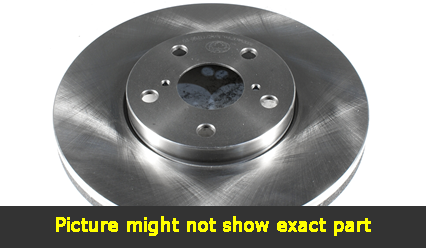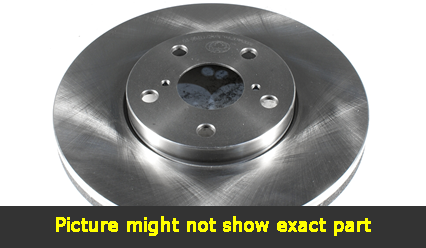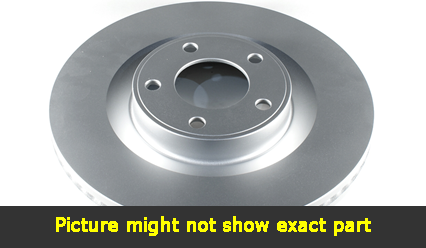2007 Chevrolet C5500 Kodiak Brake Rotors and Pads
Click here to search another vehicle
All Rotors:
OEM x
Coated x
Drilled, Slotted and Coated x
Front x
Rear x
All Pads:
Ceramic x
Semi-metallic x
Front x
Rear x
Found 3 record

Part No: BR55104
Raybestos: 580263
OE: 88936163
Raybestos: 580263
OE: 88936163
$130.36 each
Per Car QTY: 2

Part No: BR55173
Raybestos:
OE:
Raybestos:
OE:
$203.35 each
Per Car QTY: 2

Part No: PP55104
Raybestos: 580263
OE: 88936163
Raybestos: 580263
OE: 88936163
$170.46 each
Per Car QTY: 2
The braking system is a critical component of any vehicle, ensuring safety and control while driving. When it comes to choosing the right brakes for your 2007 Chevrolet C5500 Kodiak, there are a few important factors to consider. This article will guide you through the process of selecting the best brakes for your vehicle, ensuring optimal performance and reliability.
1. Determine your driving needs:
Before selecting brakes, you need to consider your driving habits and needs. Are you driving in a hilly or mountainous area? Do you frequently tow heavy loads? Do you do a lot of stop-and-go driving? Understanding your driving conditions will help you determine which braking system is best suited for your needs.
2. Know the different types of brakes:
There are three main types of brakes: disc brakes, drum brakes, and performance brakes. Disc brakes use calipers and pads to clamp down on a disc rotor to slow down the wheel. Drum brakes use shoes and a rotating drum to create friction and slow down the vehicle. Performance brakes are designed for high-performance vehicles and offer improved stopping power and heat dissipation.
3. Consider OEM vs. aftermarket brakes:
OEM (Original Equipment Manufacturer) brakes are designed specifically for your vehicle make and model. They provide reliable performance and are the safest choice since they meet the manufacturer's specifications. Aftermarket brakes, on the other hand, offer a wider range of options and prices but may not always meet the same quality standards as OEM brakes. If safety is your top priority, OEM brakes are recommended.
4. Research the best brands:
When it comes to brake components, it is essential to choose reputable brands known for their quality and reliability. Some well-known brake brands include ACDelco, Bosch, Wagner, and EBC Brakes. Reading customer reviews and seeking recommendations from fellow Chevrolet C5500 Kodiak owners can also help you narrow down the options.
5. Consult a professional mechanic:
If you are unsure about which brakes to choose for your specific vehicle, it is always recommended to consult a professional mechanic. They have the expertise and experience to guide you in selecting the best braking system based on your driving needs, vehicle specifications, and budget.
6. Consider upgrading other brake components:
When replacing your brakes, it may also be a good time to consider upgrading other brake components for improved performance and longevity. This can include upgrading brake pads, rotors, calipers, and brake lines. Upgraded components can offer better stopping power, reduced brake fade, and improved overall braking performance.
7. Maintain regular brake inspections and maintenance:
Once you have chosen and installed new brakes, it is crucial to maintain regular brake inspections and maintenance. This includes checking brake fluid levels, replacing brake pads when worn, and inspecting the brake lines for any signs of leaks or damage. Regular maintenance will help ensure the longevity and optimal performance of your chosen brakes.
To conclude, choosing the right brakes for your 2007 Chevrolet C5500 Kodiak is essential for safe and reliable driving. Consider your driving needs, research different brake types and brands, consult a professional mechanic if needed, and maintain regular brake inspections and maintenance. By following these steps, you can select the best brakes for your vehicle and enjoy confident and efficient braking performance.
1. Determine your driving needs:
Before selecting brakes, you need to consider your driving habits and needs. Are you driving in a hilly or mountainous area? Do you frequently tow heavy loads? Do you do a lot of stop-and-go driving? Understanding your driving conditions will help you determine which braking system is best suited for your needs.
2. Know the different types of brakes:
There are three main types of brakes: disc brakes, drum brakes, and performance brakes. Disc brakes use calipers and pads to clamp down on a disc rotor to slow down the wheel. Drum brakes use shoes and a rotating drum to create friction and slow down the vehicle. Performance brakes are designed for high-performance vehicles and offer improved stopping power and heat dissipation.
3. Consider OEM vs. aftermarket brakes:
OEM (Original Equipment Manufacturer) brakes are designed specifically for your vehicle make and model. They provide reliable performance and are the safest choice since they meet the manufacturer's specifications. Aftermarket brakes, on the other hand, offer a wider range of options and prices but may not always meet the same quality standards as OEM brakes. If safety is your top priority, OEM brakes are recommended.
4. Research the best brands:
When it comes to brake components, it is essential to choose reputable brands known for their quality and reliability. Some well-known brake brands include ACDelco, Bosch, Wagner, and EBC Brakes. Reading customer reviews and seeking recommendations from fellow Chevrolet C5500 Kodiak owners can also help you narrow down the options.
5. Consult a professional mechanic:
If you are unsure about which brakes to choose for your specific vehicle, it is always recommended to consult a professional mechanic. They have the expertise and experience to guide you in selecting the best braking system based on your driving needs, vehicle specifications, and budget.
6. Consider upgrading other brake components:
When replacing your brakes, it may also be a good time to consider upgrading other brake components for improved performance and longevity. This can include upgrading brake pads, rotors, calipers, and brake lines. Upgraded components can offer better stopping power, reduced brake fade, and improved overall braking performance.
7. Maintain regular brake inspections and maintenance:
Once you have chosen and installed new brakes, it is crucial to maintain regular brake inspections and maintenance. This includes checking brake fluid levels, replacing brake pads when worn, and inspecting the brake lines for any signs of leaks or damage. Regular maintenance will help ensure the longevity and optimal performance of your chosen brakes.
To conclude, choosing the right brakes for your 2007 Chevrolet C5500 Kodiak is essential for safe and reliable driving. Consider your driving needs, research different brake types and brands, consult a professional mechanic if needed, and maintain regular brake inspections and maintenance. By following these steps, you can select the best brakes for your vehicle and enjoy confident and efficient braking performance.


